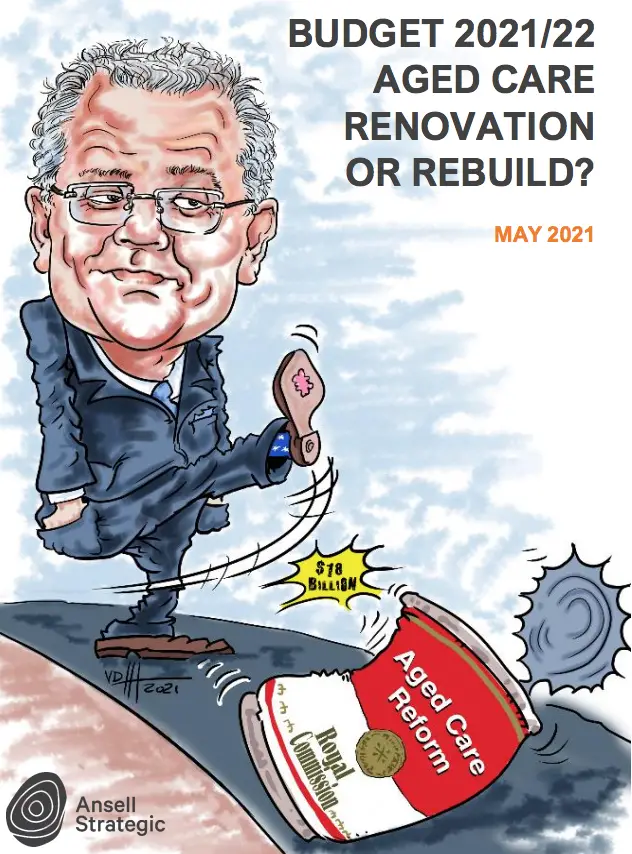Aged care industry analysts have labelled the Australian Government’s Budget funding as “nothing transformational”, arguing the record spending will not bring needs-based structural reform and providers will again become unprofitable within a few years.
Aged care consultancy Ansell Strategic said the $17.7 billion spend was long overdue to address home care waitlist and residential aged care under-resourcing.
But the unprecedented boost in funding would not facilitate the sector’s transformation into an entitlement model, which was recommended by the Royal Commission into Aged Care Quality and Safety.
“Unfortunately, the most critical recommendation of the final report has been ignored – the entitlement of older people to receive care as they need it,” the report said.
“Throughout the Budget documents, the government has cleverly borrowed terminology from the Royal Commission, giving the optimistic among us the impression that structural reform was on the way.
“On closer inspection, the ‘once in a generation reforms’ that claim to ‘respond to recommendations of the Aged Care Royal Commission’ are in fact overdue commitments made by this Coalition Government in the 2017 and 2018 Federal Budgets.”
Ansell Strategic conducts business advisory, research and operational and management consultancy services to industry.
The firm argues the system has now been “propped up” but the structural deficits would return within three years.
“Providers will continue to have rising wage costs, higher costs of care and greater regulation coupled with minute increases in the main sources of revenue,” it said.
“We forecast that the sector will be in a breakeven/loss position by FY24 without any major intervention or change to committed funding arrangements.”
The review said less than 7 per cent of the $17.7bn funding was for new initiatives, which were “minor modifications” to the existing system, and the rest of the funding was catch-up spending.
This spending cannot be continued without a specific levy or means-testing provisions, the report said.
The looming ageing population will effectively transform the system themselves, by paying for higher quality services but also demanding change from governments.
“Coupled with a huge increase in the number of older people needing care, the taxpayer dependency ratio will soon become unmanageable,” it said.
“The Royal Commission has also created a much greater public understanding of aged care and the challenges for older people and the providers that care for them. The government is more likely to be held accountable as the waitlists grow in the future.
“The next generation of consumers are the Baby Boomers – the architects of consumer choice – and they will not be content to receive rationed services to balance the national budget. In the absence of structural reform by government, one will be forced by the consumer.
“We may soon enter a period of customer facing services where people will have the right to access aged care services when and where they need it. This will likely be done with greater user contributions from a generation of consumers that will demand quality.”
The report cited Royal Commission data that said successive governments had saved about 25 per cent of total aged care funding, or about $10bn this year, through the capped system of home care and residential aged care.
It said indexing would create the funding crunch in the future, with demands for higher wages, higher costs of regulation and escalating care fees. About 80 per cent of provider revenue comes from the basic daily fee funding.










